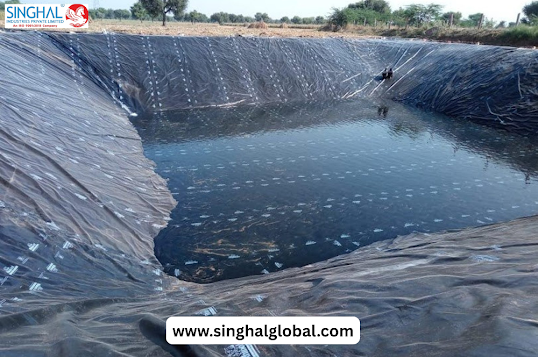HDPE Sheet: A Perfect Material for Harsh Environmental Conditions
In a world that's increasingly demanding, with materials often subjected to the extremes of global locations, the need for strong, reliable solutions has never been more pertinent. High-Density Polyethylene (HDPE) sheets have become a perfect solution for facing and managing extreme environmental conditions. The unique molecular arrangement and properties of HDPE sheets allow them to face challenges that would ultimately degrade or destroy many other conventional materials, thus making HDPE sheets an important choice in numerous corporate environments.
Unmatched Resistance to Environmental Aggressors
The true strength of HDPE sheets in extreme environments is in their incredible resistance to a wide variety of external factors. Unlike metals that can rust or corrode, or woods that can rot or splinter, HDPE is naturally resistant to moisture. HDPE has very low water absorption rates, therefore, it will neither swell, deform, or degrade when subject to wet or damp conditions, thus making it a perfect fit for marine applications, water treatment facilities, and outdoor structures.
Aside from moisture, HDPE is highly resistant to many chemicals. The material has excellent resistance to many acids, bases, salts, and many organic solvents with no degradation. This property is very important when manufacturing chemicals, when dealing with hazardous waste, or in an agricultural environment where chemicals will inevitably come into contact with the HDPE. HDPE is chemically inert, which means it won't react with the chemical it contains or with chemicals it is exposed to. This stops contamination or disruption to the structural integrity for a long time.
Temperature Fluctuations and UV Resistance
In harsh environments, including industry, there are often extreme temperature fluctuations. HDPE sheets are able to maintain mechanical performance over a broad stretch of temperature, generally from -50 °C to +80 °C. This means there is reliable performance regardless of whether the conditions are classified as arctic or tropical, and HDPE sheets do not become brittle and fail because of cold nor soft and fail because of moderate heat. With the other mentioned properties, this is assured performance continuously throughout the year.
Moreover, direct and prolonged exposure to ultraviolet (UV) radiation from sunlight will cause many plastics to break down over time resulting in fading, cracking and reduced mechanical strength. However, as a result of being formulated with carbon black, HDPE Sheet Black excels with regards to UV performance. Carbon black is not only a colorant but also an excellent UV stabilizer that absorbs and disperses UV radiation. As a result, carbon black prevents polymer chain degradation and provides greater longevity for materials installed outdoors. As a result, HDPE sheet black is an excellent option for a variety of applications such as geomembranes, outdoor playground equipment, agricultural liners and any number of other marine products that are regularly exposed to the sunlight.
A Variety of Colour Applications in Challenging Environments
While HDPE sheet black is an ideal solution for challenging UV environments there are other colours of HDPE that have similar or important roles in challenging environments because of a function or aesthetic. White HDPE sheet is the typical choice for many applications where cleanliness, hygiene, and light reflection is important. The bright clean appearance of white HDPE sheet makes it suitable for food processing facilities, cleanrooms, medical facilities, and pharmaceutical manufacturing. In these applications, a White HDPE Sheet's surface is non-toxic, easy to clean and is resistant to bacterial growth and contamination where visual identification of contaminants is as important as performance.
While natural HDPE has good UV resistance, white sheets can be stabilized to resist degradation when exposed to outdoor light, making a white HDPE sheet a good choice for bright signage or reflective surfaces in harsh sunny climates. Blue HDPE Sheet is generally used in applications associated with water and hygiene. The surface color can be employed for identification purposes in pipe systems or for aesthetic appeal for aquatic based products or systems e.g. swimming pools, marine structures, or recreational equipment. It might be recognized in industrial applications where a blue HDPE sheet indicates a certain grade or type of material that is identified as "safe for potable water contact" or chemistry that may be employed into water treatment systems.
Impact Resistance and Durability
Outside of chemical and environmental resistance, the impact strength of HDPE sheets is excellent as well. They are capable of absorbing a lot of shocks and impacts without cracking or breaking apart, making them advantageous in the development of products such as protective barriers, cutting boards, and components of heavy machinery. This impact strength aids in the durability and longevity of HDPE products – even in similar high-stress, high-impact environments with in the various industrial applications, or in the context of recreational facilities.
Conclusion
HDPE sheets demonstrate the amazing capabilities of polymer engineering in producing strong and versatile solutions for the most demanding conditions. Their moisture, chemical, and temperature resistance, plus UV stability, especially in types like black HDPE sheets, makes them a unique product. There is versatility in the colors of HDPE sheets as well, such as white HDPE sheet for hygiene or aesthetics purposes, and the use of blue HDPE sheet in water situations, each making unique contributions to working through challenges in difficult environments.
Frequently Asked Questions
Q: Why is black HDPE sheets great for outdoor use?
A: HDPE sheets black is great for outdoor use because carbon black is added in the manufacturing process.
Q: When is white HDPE sheet better than other colors?
A: White HDPE sheet is often best for applications that require a high level of hygiene such as food processing surfaces, cleanrooms, and hospitals, because it can be visually inspected for possible contaminants. It is also non-toxic, and easy to clean.
Q: Who is the largest manufacturer of HDPE sheets ?
A: Singhal Global Private Limited is the well known and the largest manufacturer in India with an extensive product range and quality assurance practices..png)

.png)

Comments
Post a Comment